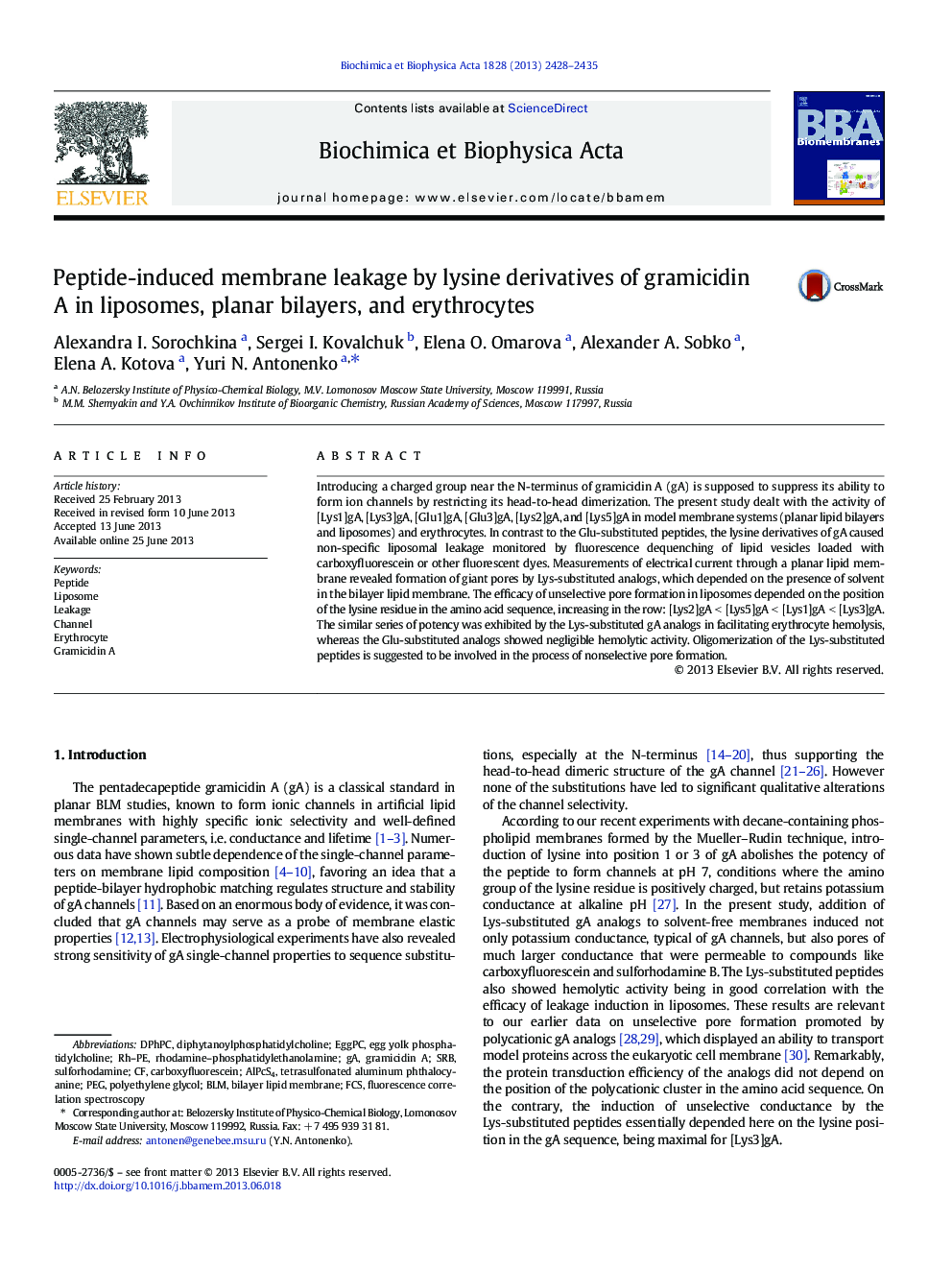| Article ID | Journal | Published Year | Pages | File Type |
|---|---|---|---|---|
| 1944287 | Biochimica et Biophysica Acta (BBA) - Biomembranes | 2013 | 8 Pages |
•Monosubstituted lysine derivatives of gramicidin A caused liposomal leakage.•Leakage depended on the position of the lysine residue in amino acid sequence.•Lys-substituted gramicidin analogs induced erythrocyte hemolysis.•Aggregation of Lys-substituted peptides could be involved in the leakage induction.
Introducing a charged group near the N-terminus of gramicidin A (gA) is supposed to suppress its ability to form ion channels by restricting its head-to-head dimerization. The present study dealt with the activity of [Lys1]gA, [Lys3]gA, [Glu1]gA, [Glu3]gA, [Lys2]gA, and [Lys5]gA in model membrane systems (planar lipid bilayers and liposomes) and erythrocytes. In contrast to the Glu-substituted peptides, the lysine derivatives of gA caused non-specific liposomal leakage monitored by fluorescence dequenching of lipid vesicles loaded with carboxyfluorescein or other fluorescent dyes. Measurements of electrical current through a planar lipid membrane revealed formation of giant pores by Lys-substituted analogs, which depended on the presence of solvent in the bilayer lipid membrane. The efficacy of unselective pore formation in liposomes depended on the position of the lysine residue in the amino acid sequence, increasing in the row: [Lys2]gA < [Lys5]gA < [Lys1]gA < [Lys3]gA. The similar series of potency was exhibited by the Lys-substituted gA analogs in facilitating erythrocyte hemolysis, whereas the Glu-substituted analogs showed negligible hemolytic activity. Oligomerization of the Lys-substituted peptides is suggested to be involved in the process of nonselective pore formation.
Graphical abstractFigure optionsDownload full-size imageDownload high-quality image (179 K)Download as PowerPoint slide
